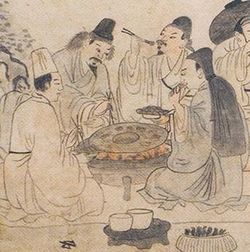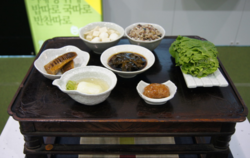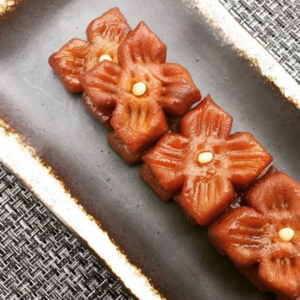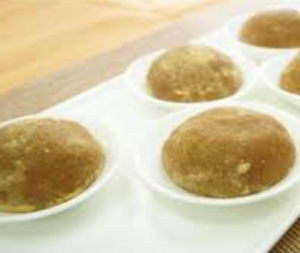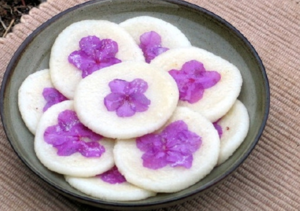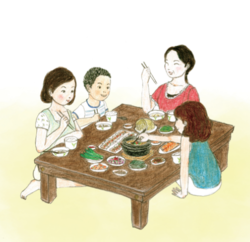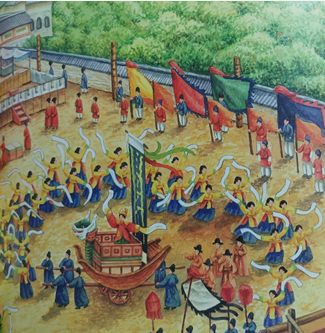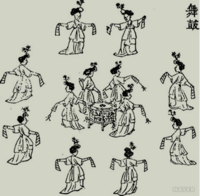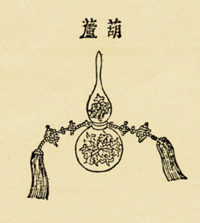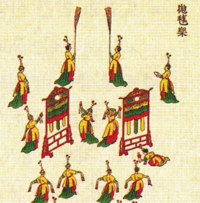"2018 GGHS Team 10"의 두 판 사이의 차이
(→Goryeoyulgo(고려율고)) |
(→Team 10 Introduction) |
||
| (3명의 사용자에 의한 19개의 중간 편집이 숨겨짐) | |||
| 1번째 줄: | 1번째 줄: | ||
{{틀:2018GGHS}} | {{틀:2018GGHS}} | ||
| − | |||
| − | |||
| − | |||
| − | |||
| − | |||
| − | |||
| − | |||
| − | |||
| − | |||
| − | |||
| − | |||
| − | |||
| − | |||
| − | |||
| − | |||
| − | |||
=Brief History of Goryeo= | =Brief History of Goryeo= | ||
| − | [[File:ce67e488.jpg|right]] | + | [[File:ce67e488.jpg|250px|right]] |
Goryeo (고려; 高麗; [ko.ɾjʌ]; 918–1392), also spelled as Koryŏ, was a Korean kingdom established in 918 by King Taejo. This kingdom later gave name to the modern exonym "Korea".<ref>Kyu Chull Kim (8 March 2012). [https://books.google.com/books?id=l6NnVxnFMuMC&pg=PA128|Rootless: A Chronicle of My Life Journey. AuthorHouse. p. 128. ISBN 978-1-4685-5891-3. Retrieved 19 September 2013.]</ref> It united the Later Three Kingdoms in 936 and ruled most of the Korean Peninsula until it was removed by the founder of the Joseon, Yi Seong-gye, in 1392. Goryeo expanded Korea's borders to present-day Wonsan in the northeast (936–943), the Yalu River (993) and finally almost the whole of the Korean Peninsula (1374). | Goryeo (고려; 高麗; [ko.ɾjʌ]; 918–1392), also spelled as Koryŏ, was a Korean kingdom established in 918 by King Taejo. This kingdom later gave name to the modern exonym "Korea".<ref>Kyu Chull Kim (8 March 2012). [https://books.google.com/books?id=l6NnVxnFMuMC&pg=PA128|Rootless: A Chronicle of My Life Journey. AuthorHouse. p. 128. ISBN 978-1-4685-5891-3. Retrieved 19 September 2013.]</ref> It united the Later Three Kingdoms in 936 and ruled most of the Korean Peninsula until it was removed by the founder of the Joseon, Yi Seong-gye, in 1392. Goryeo expanded Korea's borders to present-day Wonsan in the northeast (936–943), the Yalu River (993) and finally almost the whole of the Korean Peninsula (1374). | ||
| − | By the late 13th century, after nearly 30 years of warfare with the Mongols of the Yuan dynasty, Goryeo lost much of its power but retained nominal control. Although King Gongmin managed to free his kingdom from the Yuan overlordship in the mid-14th century, General Yi Seonggye revolted and overthrew King Gongyang in 1392, establishing himself as Taejo of Joseon. Gongyang was killed in 1394. | + | By the late 13th century, after nearly 30 years of warfare with the Mongols of the Yuan dynasty, Goryeo lost much of its power but retained nominal control. Although King Gongmin managed to free his kingdom from the Yuan overlordship in the mid-14th century, General Yi Seonggye revolted and overthrew King Gongyang in 1392, establishing himself as Taejo of Joseon. Gongyang was killed in 1394. |
= Goryeo Diet= | = Goryeo Diet= | ||
== Main Dishes== | == Main Dishes== | ||
| + | [[파일:밥상이 밥상밥상.PNG|250px|right]] | ||
===Diversified grain foods=== | ===Diversified grain foods=== | ||
In the Goryeo Dynasty main dishes were rice, barley mixed with barnyard grass(피), red bean porridge, noodle soup, buckwheat noodles. | In the Goryeo Dynasty main dishes were rice, barley mixed with barnyard grass(피), red bean porridge, noodle soup, buckwheat noodles. | ||
| + | <ref>http://borisu1004.tistory.com/140</ref> | ||
| + | |||
===The development of soup=== | ===The development of soup=== | ||
The soup developed greatly during Goryeo Dynasty. For example, soybean paste soup (Doenjang Guk) was cooked almost in the same way as it is done nowadays. | The soup developed greatly during Goryeo Dynasty. For example, soybean paste soup (Doenjang Guk) was cooked almost in the same way as it is done nowadays. | ||
| 35번째 줄: | 22번째 줄: | ||
== Snack== | == Snack== | ||
===Goryeobyeong(고려병,[高麗餠])<yumilgwa,(유밀과,[油蜜菓])>=== | ===Goryeobyeong(고려병,[高麗餠])<yumilgwa,(유밀과,[油蜜菓])>=== | ||
| − | + | [[파일:Gggggggggggggggggggggggggggggggggggggggggggggggg.PNG|300px|right|yumilgwa]] <ref>https://www.pictasite.com/hashtag/%EA%B0%9C%EC%84%B1%EB%AA%A8%EC%95%BD%EA%B3%BC | |
| + | </ref> | ||
Goryeobyeong(고려병) is a cake made with flour, honey and sesame oil. Since ancient times, the yumilgwa(유밀과) has been made into a fruit shape and put on the table for a memorial ceremony instead of the fruits that why it is called yumilgwa what means "fake fruit“ in Korean. <ref>http://www.saimdangfood.kr/html/hangwa_kind.html</ref> In the <<Goryeosa(고려사[高麗史])>> Chungnyeorwang(충렬왕,[忠烈王]) went to Wonnara(원나라,[元]) to attend a wedding ceremony of his son and served the yumilgwa at the party. Records show that the taste was melting in the mouth and it had a great reputation. For this reason, yumilgwa were especially called Goryeobyeong in Mongolia. <ref>http://encykorea.aks.ac.kr/Contents/Item/E0004602 </ref> Since Goryeo as a Buddhist country banned killing it was not possible to hold fish for a memorial service. Instead, they put fish-shaped yumilgwa on the table. The consumption of yumilgwa was increasing so instead of yumilgwa people began to put fruits on the table. Old records also show that " yumilgwa production was prohibited" because at the time that Goryeo Dynasty was going through an era when rice was scarce, and since the ingredients of yumilgwa such as flour, oil, honey or grain syrup were rarer than rice at that time. yumilgwa became a high quality snack with a considerable cost of ingredients and consumption of sweeteners and oils in comparison to other snacks. <ref>http://encykorea.aks.ac.kr/Contents/Item/E0004602</ref> | Goryeobyeong(고려병) is a cake made with flour, honey and sesame oil. Since ancient times, the yumilgwa(유밀과) has been made into a fruit shape and put on the table for a memorial ceremony instead of the fruits that why it is called yumilgwa what means "fake fruit“ in Korean. <ref>http://www.saimdangfood.kr/html/hangwa_kind.html</ref> In the <<Goryeosa(고려사[高麗史])>> Chungnyeorwang(충렬왕,[忠烈王]) went to Wonnara(원나라,[元]) to attend a wedding ceremony of his son and served the yumilgwa at the party. Records show that the taste was melting in the mouth and it had a great reputation. For this reason, yumilgwa were especially called Goryeobyeong in Mongolia. <ref>http://encykorea.aks.ac.kr/Contents/Item/E0004602 </ref> Since Goryeo as a Buddhist country banned killing it was not possible to hold fish for a memorial service. Instead, they put fish-shaped yumilgwa on the table. The consumption of yumilgwa was increasing so instead of yumilgwa people began to put fruits on the table. Old records also show that " yumilgwa production was prohibited" because at the time that Goryeo Dynasty was going through an era when rice was scarce, and since the ingredients of yumilgwa such as flour, oil, honey or grain syrup were rarer than rice at that time. yumilgwa became a high quality snack with a considerable cost of ingredients and consumption of sweeteners and oils in comparison to other snacks. <ref>http://encykorea.aks.ac.kr/Contents/Item/E0004602</ref> | ||
====Recipe==== | ====Recipe==== | ||
| 47번째 줄: | 35번째 줄: | ||
===Goryeoyulgo(고려율고)=== | ===Goryeoyulgo(고려율고)=== | ||
| − | [[파일: | + | [[파일:555555555555555555555555555555555555.PNG|300px|Goryeoyulgo|right|Goryeoyulgo]] |
| + | <ref>http://blog.naver.com/PostView.nhn?blogId=gazeuntteul&logNo=150183030730&parentCategoryNo=&categoryNo=&viewDate=&isShowPopularPosts=false&from=postView</ref> | ||
| + | |||
Goryeoyulgo(고려율고) is a rice cake cooked with glutinous rice powder and chestnut. It is called the yulgo(율고,[栗糕]) or the bamseolgi(밤설기). According to the records of Samgukji(삼국지,[三國志]), Wiseo(위서[魏書]), Huhanseo(후한서,[後漢書]), suseo(수서,[隋書]) etc. there was a good chestnut in Korea. Goryeo people used chestnut as an ingredient for various foods throughout the seasons. There was a rice cake called Goryeoyulgo in the book “Geogapiryong(거가필용,[居家必用])”. Also, in the book "Haedongyeoksa(해동역사,[海東繹史])" it was said that yulgo made by Goryeo people was the best. <ref>http://folkency.nfm.go.kr/kr/topic/%EB%B0%A4%EB%96%A1/3910</ref> | Goryeoyulgo(고려율고) is a rice cake cooked with glutinous rice powder and chestnut. It is called the yulgo(율고,[栗糕]) or the bamseolgi(밤설기). According to the records of Samgukji(삼국지,[三國志]), Wiseo(위서[魏書]), Huhanseo(후한서,[後漢書]), suseo(수서,[隋書]) etc. there was a good chestnut in Korea. Goryeo people used chestnut as an ingredient for various foods throughout the seasons. There was a rice cake called Goryeoyulgo in the book “Geogapiryong(거가필용,[居家必用])”. Also, in the book "Haedongyeoksa(해동역사,[海東繹史])" it was said that yulgo made by Goryeo people was the best. <ref>http://folkency.nfm.go.kr/kr/topic/%EB%B0%A4%EB%96%A1/3910</ref> | ||
====Recipe==== | ====Recipe==== | ||
| 57번째 줄: | 47번째 줄: | ||
<ref>http://www.fooddesk.com/news/quickViewArticleView.html?idxno=217</ref> | <ref>http://www.fooddesk.com/news/quickViewArticleView.html?idxno=217</ref> | ||
| − | ===Hwajeon(화전,花煎)=== | + | ===Hwajeon(화전,花煎)=== |
| + | [[파일:22222222222222222222222.PNG|300px|right|Hwajeon]]<ref>http://www.hani.co.kr/arti/society/health/841185.html</ref> | ||
Hwajeon’s other name is flower pancake. It is a fried rice cake with flowers on the top. People usually used azaleas, sometimes, depending on the season, roses, pear blossoms and chrysanthemum flowers. There was a custom called Samjitnal(삼짇날),one of the three seasonal traditions of Goryeo dynasty when people used to cook especially azalea pancakes and go for a picnic. | Hwajeon’s other name is flower pancake. It is a fried rice cake with flowers on the top. People usually used azaleas, sometimes, depending on the season, roses, pear blossoms and chrysanthemum flowers. There was a custom called Samjitnal(삼짇날),one of the three seasonal traditions of Goryeo dynasty when people used to cook especially azalea pancakes and go for a picnic. | ||
<ref>http://food.chosun.com/site/data/html_dir/2014/03/05/2014030502625.html</ref> | <ref>http://food.chosun.com/site/data/html_dir/2014/03/05/2014030502625.html</ref> | ||
| 75번째 줄: | 66번째 줄: | ||
<ref>https://terms.naver.com/entry.nhn?docId=1633994&cid=42752&categoryId=42754</ref> | <ref>https://terms.naver.com/entry.nhn?docId=1633994&cid=42752&categoryId=42754</ref> | ||
| − | ===Development of | + | ===Development of Luxury Drinks === |
With the Goryeo Dynasty alcohol became very diverse. For instance, in the co-operative product of several authors from Hanllim University named Hanllim Byeolgok(한림별곡,翰林別曲) | With the Goryeo Dynasty alcohol became very diverse. For instance, in the co-operative product of several authors from Hanllim University named Hanllim Byeolgok(한림별곡,翰林別曲) | ||
| 93번째 줄: | 84번째 줄: | ||
===Custom=== | ===Custom=== | ||
| + | [[파일:4545454545454545454545.PNG|250px|right]] | ||
| + | |||
| + | |||
| + | |||
| + | |||
| + | |||
| + | |||
During the Goryeo Dynasty, the traditional meal consisted rice which was the main dish, soup and stew as side dishes. According to the book Goryeodogyeong(고려도경), foreign envoys were served three meals a day that means there already were tradition of having three proper meals a day. There was also a custom of sitting at the table and eating with a spoon in the heated room called ondolbang(온돌방). | During the Goryeo Dynasty, the traditional meal consisted rice which was the main dish, soup and stew as side dishes. According to the book Goryeodogyeong(고려도경), foreign envoys were served three meals a day that means there already were tradition of having three proper meals a day. There was also a custom of sitting at the table and eating with a spoon in the heated room called ondolbang(온돌방). | ||
<ref>http://www.cybernk.net/infoText/InfoFolkDetail.aspx?mc=FF0101&sc=C111106&direct=1</ref> | <ref>http://www.cybernk.net/infoText/InfoFolkDetail.aspx?mc=FF0101&sc=C111106&direct=1</ref> | ||
| 114번째 줄: | 112번째 줄: | ||
1. Moogo(무고(舞鼓)) | 1. Moogo(무고(舞鼓)) | ||
| − | [[파일:무고의 모습.png]] | + | [[파일:무고의 모습.png|200px|right]] |
| + | |||
It originated from the large drum, which was built with picked up raft that was floating on the beach by Yi Gon(이곤(李混)) who was banished to Gangwon(강원) Province during the king Chungnyeol (충렬왕) Dynasty of Goryeo. Moogo is also known as the title of the song since it was accompanied by the Moogo. | It originated from the large drum, which was built with picked up raft that was floating on the beach by Yi Gon(이곤(李混)) who was banished to Gangwon(강원) Province during the king Chungnyeol (충렬왕) Dynasty of Goryeo. Moogo is also known as the title of the song since it was accompanied by the Moogo. | ||
| + | |||
2. Dongdong(동동(動動)) | 2. Dongdong(동동(動動)) | ||
| − | [[파일: | + | [[파일:ㄴㅀㅇㅎㄷㅅㅎㄱㅎ.PNG|200px|]] |
| + | |||
Dongdong was the dance that was accompanied with the song “Dongdongsa(동동사(動動詞))”. The title “Dongjungjae(동동정재)” was used until October of 1449, but later in book “Akhakgeumbum(악학궤범)” the original name was dismissed and renamed to“Abak(아박(牙拍))” because the dance was tuned in the rhythm of instrument called Bak(박(拍))” , a small gourd made of ivory. | Dongdong was the dance that was accompanied with the song “Dongdongsa(동동사(動動詞))”. The title “Dongjungjae(동동정재)” was used until October of 1449, but later in book “Akhakgeumbum(악학궤범)” the original name was dismissed and renamed to“Abak(아박(牙拍))” because the dance was tuned in the rhythm of instrument called Bak(박(拍))” , a small gourd made of ivory. | ||
2019년 1월 9일 (수) 19:59 기준 최신판
목차
Brief History of Goryeo
Goryeo (고려; 高麗; [ko.ɾjʌ]; 918–1392), also spelled as Koryŏ, was a Korean kingdom established in 918 by King Taejo. This kingdom later gave name to the modern exonym "Korea".[1] It united the Later Three Kingdoms in 936 and ruled most of the Korean Peninsula until it was removed by the founder of the Joseon, Yi Seong-gye, in 1392. Goryeo expanded Korea's borders to present-day Wonsan in the northeast (936–943), the Yalu River (993) and finally almost the whole of the Korean Peninsula (1374). By the late 13th century, after nearly 30 years of warfare with the Mongols of the Yuan dynasty, Goryeo lost much of its power but retained nominal control. Although King Gongmin managed to free his kingdom from the Yuan overlordship in the mid-14th century, General Yi Seonggye revolted and overthrew King Gongyang in 1392, establishing himself as Taejo of Joseon. Gongyang was killed in 1394.
Goryeo Diet
Main Dishes
Diversified grain foods
In the Goryeo Dynasty main dishes were rice, barley mixed with barnyard grass(피), red bean porridge, noodle soup, buckwheat noodles. [2]
The development of soup
The soup developed greatly during Goryeo Dynasty. For example, soybean paste soup (Doenjang Guk) was cooked almost in the same way as it is done nowadays. There was variety of soups, Seolleongtang, Toranguk(토란국) made with taro, Curled Mallow Soup(아욱국), Soonchae cold soup(순채냉국), kelp soup(다시맛국), seaweed soup(미역국), etc.
Meat dishes
Seolisa(설리자, 雪裏炙) was used to be cooked with beef ribs or the heart of cow. People fried meat in oil, then put them in cold water when they were half-cooked, and then grilled them on the high heat. This dish was mainly used as a snack eaten with drinks. [3]
Snack
Goryeobyeong(고려병,[高麗餠])<yumilgwa,(유밀과,[油蜜菓])>
[4]Goryeobyeong(고려병) is a cake made with flour, honey and sesame oil. Since ancient times, the yumilgwa(유밀과) has been made into a fruit shape and put on the table for a memorial ceremony instead of the fruits that why it is called yumilgwa what means "fake fruit“ in Korean. [5] In the <<Goryeosa(고려사[高麗史])>> Chungnyeorwang(충렬왕,[忠烈王]) went to Wonnara(원나라,[元]) to attend a wedding ceremony of his son and served the yumilgwa at the party. Records show that the taste was melting in the mouth and it had a great reputation. For this reason, yumilgwa were especially called Goryeobyeong in Mongolia. [6] Since Goryeo as a Buddhist country banned killing it was not possible to hold fish for a memorial service. Instead, they put fish-shaped yumilgwa on the table. The consumption of yumilgwa was increasing so instead of yumilgwa people began to put fruits on the table. Old records also show that " yumilgwa production was prohibited" because at the time that Goryeo Dynasty was going through an era when rice was scarce, and since the ingredients of yumilgwa such as flour, oil, honey or grain syrup were rarer than rice at that time. yumilgwa became a high quality snack with a considerable cost of ingredients and consumption of sweeteners and oils in comparison to other snacks. [7]
Recipe
- Mix salt, ground pepper, cinnamon powder and ginger powder;
- Add sesame oil;
- Mix ginger juice and honey;
- Make shapes
- Fry in cooking oil.
- Leave it to soak in grain syrup for 20 to 30 minutes.
Goryeoyulgo(고려율고)
Goryeoyulgo(고려율고) is a rice cake cooked with glutinous rice powder and chestnut. It is called the yulgo(율고,[栗糕]) or the bamseolgi(밤설기). According to the records of Samgukji(삼국지,[三國志]), Wiseo(위서[魏書]), Huhanseo(후한서,[後漢書]), suseo(수서,[隋書]) etc. there was a good chestnut in Korea. Goryeo people used chestnut as an ingredient for various foods throughout the seasons. There was a rice cake called Goryeoyulgo in the book “Geogapiryong(거가필용,[居家必用])”. Also, in the book "Haedongyeoksa(해동역사,[海東繹史])" it was said that yulgo made by Goryeo people was the best. [10]
Recipe
Dried chestnut, honey-water and the glutinous rice powder.
- Peel and Make it into powder;
- Mix the chestnut flour and the glutinous rice powder;
- Add honey-water;
- Steam;
Hwajeon(화전,花煎)
[12]Hwajeon’s other name is flower pancake. It is a fried rice cake with flowers on the top. People usually used azaleas, sometimes, depending on the season, roses, pear blossoms and chrysanthemum flowers. There was a custom called Samjitnal(삼짇날),one of the three seasonal traditions of Goryeo dynasty when people used to cook especially azalea pancakes and go for a picnic. [13] [14]
Recipe
- Mix glutinous rice flour and nonglutinon rice flour.
- Add hot water and knead.
- Divide the dough on eatable sized cakes
- Put the flowers on top of the cakes
- Bake on a pan and sprinkle grain syrup
Beverages
The Tea Culture of the Goryeo Dynasty
During the Goryeo Dynasty, the tea culture central figures were the royal family, monks, and writers. In the royal court tea ceremony was held whenever there was an important event, and tea was used as an international diplomatic gift. There was also a professional tea house in the royal court called the Dabang(다방), which was in charge of the affairs of the royal banquets or tea ceremonies. As tea culture is closely related to Buddhism, the Goryeo Dynasty was the golden era of Korean tea culture. During the late Goryeo, there were many restaurants on the streets where people could buy or drink tea. Through this vibrant tea culture, celadon was developed. The tea cup of Goryeo celadon has a wide range of shapes, patterns, and excellent green celadon, which show the high standard of tea culture of the time. [16]
Development of Luxury Drinks
With the Goryeo Dynasty alcohol became very diverse. For instance, in the co-operative product of several authors from Hanllim University named Hanllim Byeolgok(한림별곡,翰林別曲)
the names of Jassul, Solsul, Drink four or five leaves, Baesul, Alcohol ogapi are also mentioned in the joint work of Hanllim bachelor's degree. Another preference was milk. After exchange with Wonnara, milk cows were produced and supplied from the country. At this time, milk was mainly used as a raw a Nakjjuk material. [17]
Food Life
Grain
According to the book ' Haedongyeoksa(해동역사)', black soybean and peas were widely produced, but millet(조) was produced the most. Meanwhile, due to war there were many hungry people so, it was necessary to import more rice from Yuan.
Vegetable
The growth of Buddhism brought the diversity of vegetable dishes. At that time, the recipe of Kimchi was created and the tradition of Korean Kimchi was established. In the book Gapoyugyeong(가포육영 家圃六詠) of Lee Gyu-Bo refers to six kinds of vegetable: cucumbers, eggplants, radishes, curled mallow, sea greens, and gourd. The vegetables that appeared there were the vegetables he planted at his field. Besides, as it can be seen from the records of that time, deodeok (더덕), bracken, and pine mushrooms were also eaten.
Meat
Since Goryeo had Buddhism as its state religion, and many butchery bans were issued in the early stages, it was difficult to find meat at the tables of Goryeo people. But in the middle of the thirteenth century, people were fighting against the Mongol, and they had to eat food made with meat due to the customs of Mongolia. At this time, meat of animals such as cow, horse, pig, chicken, goose, duck, and dog was widely eaten among the common people.
Sea Food
According to the book Goryeodogyeong(고려도경 高麗圖經), seafood that Koreans used to eat was loach, abalone, shrimp, oyster, clam, conch etc. They made 젓갈, salted seafood and ate it . [18]
Custom
During the Goryeo Dynasty, the traditional meal consisted rice which was the main dish, soup and stew as side dishes. According to the book Goryeodogyeong(고려도경), foreign envoys were served three meals a day that means there already were tradition of having three proper meals a day. There was also a custom of sitting at the table and eating with a spoon in the heated room called ondolbang(온돌방).
[19]
Gamubeakui(가무백희(歌舞百戱))
Gamubeakui is a generic term for various banquets such as singing, dancing, and arts that have been taken by the government since the Unified Silla Dynasty(668–935)[20]
Gamubeakui's origin
Meanwhile The Goryeo Dynasty inherited the traditional dance and music of Unified Silla, a lantern festival( 연등회(燃燈會)) were established as important ceremonies of the state to serve the Palgwanhoe( 팔관회(八關會)) customs and Buddha since Unified Silla and consequently, various styles of singing and dancing formed the important dance culture of the Goryeo Dynasty.
Here, Palgwanhoe is a patriotic Buddhist ceremony honoring the preservation of the nation. And a lantern festival is a Buddhist event when people light up lanterns to entertain Buddha and pray for peace between the state and the royal family. There was no fixed recreation center for citizens in Goryeo society. Instead, the national holidays and various Buddhist events were held, it was held to amuse all Buddhas(제불(諸佛)) and the gods of the heaven and earth(천지신명(天地神明)) with music and Gamubeakui. Through this national events, civil servants shared joy as well as the whole nation did. There were nine major holidays in Goryeo, called Wonjeong(원정(元正)), Sangwon(상원(上元)), Hansik(한식(寒食)), Sangsa(상사(上巳)), Dano(단오(端午)), Chuseok(추석(秋夕)), Junggu(중구(重九)) , Dongji(동지(冬至)), Palgwan(팔관(八關)). The largest of them was a lantern festival held on the 15th of the first lunar month and The Palgwanhoe that was held on the eleventh lunar month.[21]
2.2 Types of Gamubeakui
Hyangakjeongjae(향악정재 [鄕樂呈才]) of the Goryeo Dynasty
Hyangakjeongjae(향악정재[22][鄕樂呈才]) of the Goryeo Dynasty HyanggakJungjae is a performance that include dances accompanied by the Korean traditional musical instruments and songs described below.
1. Moogo(무고(舞鼓))
It originated from the large drum, which was built with picked up raft that was floating on the beach by Yi Gon(이곤(李混)) who was banished to Gangwon(강원) Province during the king Chungnyeol (충렬왕) Dynasty of Goryeo. Moogo is also known as the title of the song since it was accompanied by the Moogo.
2. Dongdong(동동(動動))
Dongdong was the dance that was accompanied with the song “Dongdongsa(동동사(動動詞))”. The title “Dongjungjae(동동정재)” was used until October of 1449, but later in book “Akhakgeumbum(악학궤범)” the original name was dismissed and renamed to“Abak(아박(牙拍))” because the dance was tuned in the rhythm of instrument called Bak(박(拍))” , a small gourd made of ivory.
3. Mooae(무애(無㝵舞)) Mooae is known as the title of the song that Wonhyo(원효대사) sang to spread the propagation of Buddhism during the Silla(신라) Dynasty. He sang a phrases from the poem [Hwaam Gyeong(화엄경)] such as "the man who has nothing to be afraid of is going away from life and death as a sin”. In the part about music of “Goryeo history book” (고려사악지(樂志)) it was written that Mooae had came from overseas, and the lyrics were Buddha’s words that maxed with dialects. It disappeared after King Sejong's death, but it was reenacted with new lyrics in 1829 (Sunjo(선조) 29
Dangakjeongjae(당악정재[23][唐樂呈才]) of the Goryeo Dynasty
Chinese music("Dangak(당악)" means "Chinese music") was used for all Dangakjeongjae performances. It included “Pogurak(포구락(抛球樂))’ , ‘Yeonhwadae(연화대 [蓮花臺])’, ‘Heonsundo(헌선도 (獻仙桃))’, ‘Oyangseon( 오양선 [五羊仙] )’, ‘Sooyeonjang(수연장 [壽延長])’.
1. Pogurak(포구락(抛球樂))
"Pogurak” was the first of five performances to be performed at the Palgwanhoe(팔관회(八關會)). Actually, Pogurak was a game where people put the wooden panel with hole called“Pogu door(포구문(抛毬門))” in the center and divided people into two groups. Then, they sang, danced and throw the ball to the other side of the Pogu door. If they succeed to throw the ball through the hole, the person called Bong-hwa(봉화(奉化)) gave a flower to scored team as a prize, and the person called Bong-pil(봉필(蓬筆)) put an ink dot on the members’ faces of team which missed the goal as a punishment. According to the book“Monggyepildam”(몽계필담 (梦溪笔谈)) of Sim Gual(심괄(沈括)) who came from Song Dynasty, pogurak was originated from Lee Sin Un(이신언)’s book “Gosa(고사(故事))”.
2. Yeonhwadae(연화대 [蓮花臺]) "Yeonhwadae" was performed with Pogurak(포구락(抛球樂) in 1123. During the Dang Dynasty Yeonhwadae was originated from the nation Seokguk(석국石國) and was popular during the Song(송 [宋]) period as well. Later, it was introduced in Goryeo. The performance contain the dance where two young girls come out of a lotus flower and dance in hat called halip(합립).
3. Heonseondo(헌선도 (獻仙桃)) In Chapter 18 of "Koryosa(고려사)" it was reported that Heonseondo was performed in April of 1167 at palace “Yeonheungjeon(연흥전)”. " Heonseondo is a dance dedicated to pay respect and wish the eternal life like the sun for the guests of honor. That is why at the performance there were a tray with peaches on the hexagonal table called Bongtak(봉탁(奉卓)). There was belief that eating at least only one peach can make you live more than thousand year. The shape of the Bongtak, hexagon, means Milky way(남두육성[南斗六星])galaxy which controls the lifespan.
4.Oyangseon(오양선 [五羊仙]) "Oyangseon" is a song with a wish for the longevity of the king. The dance contains the play where god comes down through five sheep to praise the king.
5.Suyeonjang(수연장 [壽延長]) " Suyeonjang" is a song about praising the king on the fifteenth day of the first lunar month.
The difference between Dangakjeongjaea and Hyangakjeongjae
[24]Hyanggakjeongge is a performance of the songs with Korean lyrics accompanied with the Hyangak, and Dangakjeongge sings Chinese lyrics to the accompaniment of Dangak.
The significance of Gamubeakui
[25]HyanggakJungjae and DangakJungjae have a common historical significance and they were handed down to the National Center for Korean Traditional Performing Arts(국립국악원 [國立國樂院]).
HyanggakJungjae’s historical significance lies in the facts that it was a new form of royal performance in the Goryeo period, and its accompaniment song was Hyanggak that contributed to the successful transmission of Hyangakjeongjae from Goryeo to Joseon. Also Hyangakjeongjae's songs contain Korean literature like " Dongdongsa(동동사(動動詞) ".
Dangjeongjae’s historical significance lies in the facts that Dangjeongjae helped for development of its accompaniment instrument called Goryeo Dangak(고려 당악), and that it helped for improvement of royal performing arts in different ways. Before Dangakjeongjae came to Goryeo’s culture from China, Hyangakjeongjae had been the only one representative performance in Goryeo. In the late Joseon, Dangjeongjae was supported by Music Institution called Gyobang(교방 [敎坊]).
References
- ↑ Kyu Chull Kim (8 March 2012). A Chronicle of My Life Journey. AuthorHouse. p. 128. ISBN 978-1-4685-5891-3. Retrieved 19 September 2013.
- ↑ http://borisu1004.tistory.com/140
- ↑ http://encykorea.aks.ac.kr/Contents/Item/E0043018
- ↑ https://www.pictasite.com/hashtag/%EA%B0%9C%EC%84%B1%EB%AA%A8%EC%95%BD%EA%B3%BC
- ↑ http://www.saimdangfood.kr/html/hangwa_kind.html
- ↑ http://encykorea.aks.ac.kr/Contents/Item/E0004602
- ↑ http://encykorea.aks.ac.kr/Contents/Item/E0004602
- ↑ https://m.blog.naver.com/PostView.nhn?blogId=sjs0100&logNo=185319012&proxyReferer=https%3A%2F%2Fwww.google.co.kr%2F
- ↑ http://blog.naver.com/PostView.nhn?blogId=gazeuntteul&logNo=150183030730&parentCategoryNo=&categoryNo=&viewDate=&isShowPopularPosts=false&from=postView
- ↑ http://folkency.nfm.go.kr/kr/topic/%EB%B0%A4%EB%96%A1/3910
- ↑ http://www.fooddesk.com/news/quickViewArticleView.html?idxno=217
- ↑ http://www.hani.co.kr/arti/society/health/841185.html
- ↑ http://food.chosun.com/site/data/html_dir/2014/03/05/2014030502625.html
- ↑ http://encykorea.aks.ac.kr/Contents/Item/E0064862
- ↑ https://m.blog.naver.com/PostView.nhn?blogId=sjs0100&logNo=185319012&proxyReferer=https%3A%2F%2Fwww.google.co.kr%2F
- ↑ https://terms.naver.com/entry.nhn?docId=1633994&cid=42752&categoryId=42754
- ↑ http://encykorea.aks.ac.kr/Contents/Item/E0043018
- ↑ http://encykorea.aks.ac.kr/Contents/Item/E0043018
- ↑ http://www.cybernk.net/infoText/InfoFolkDetail.aspx?mc=FF0101&sc=C111106&direct=1
- ↑ https://terms.naver.com/entry.nhn?docId=3561703&cid=58721&categoryId=58724
- ↑ https://ko.wikipedia.org/wiki/%ED%8C%94%EA%B4%80%ED%9A%8C
- ↑ https://terms.naver.com/entry.nhn?docId=795729&cid=46666&categoryId=46666>
- ↑ https://terms.naver.com/entry.nhn?docId=794538&cid=46666&categoryId=46666
- ↑ http://encykorea.aks.ac.kr/Contents/Item/E0013911
- ↑ http://encykorea.aks.ac.kr/Contents/Item/E0013911

